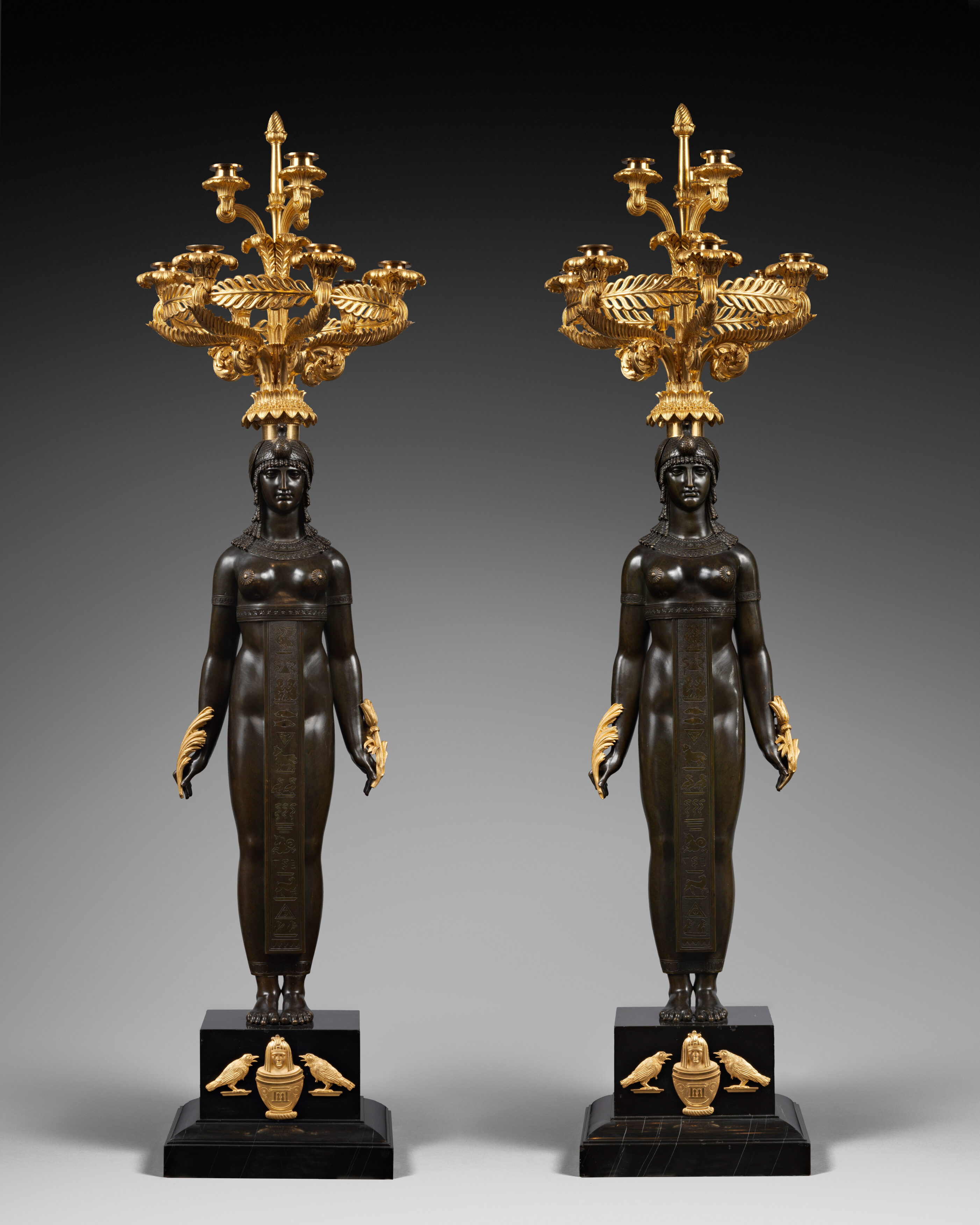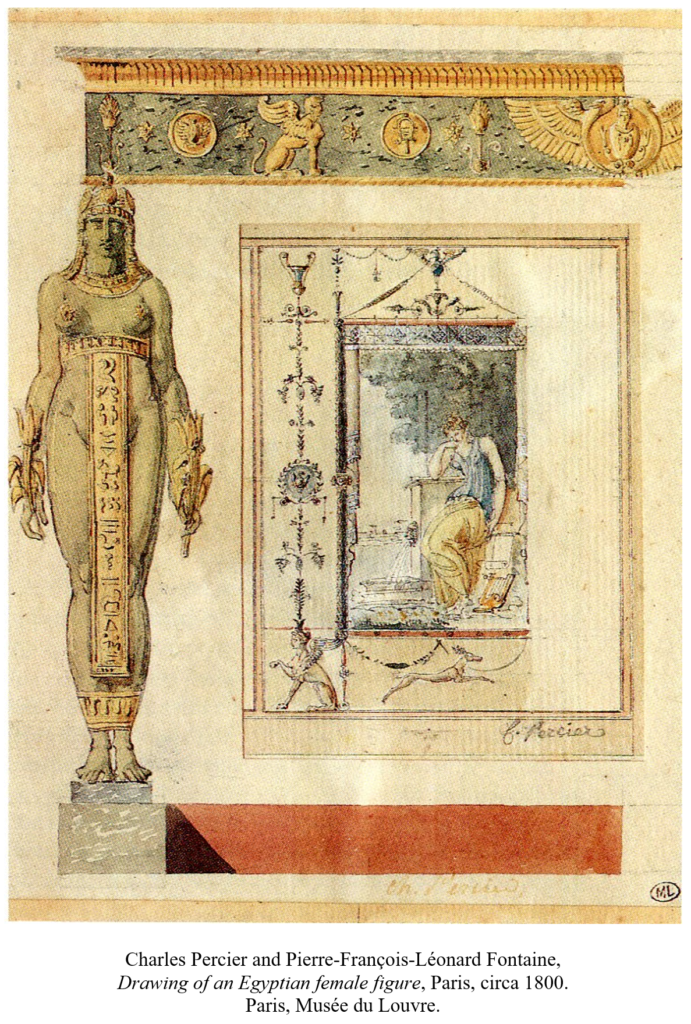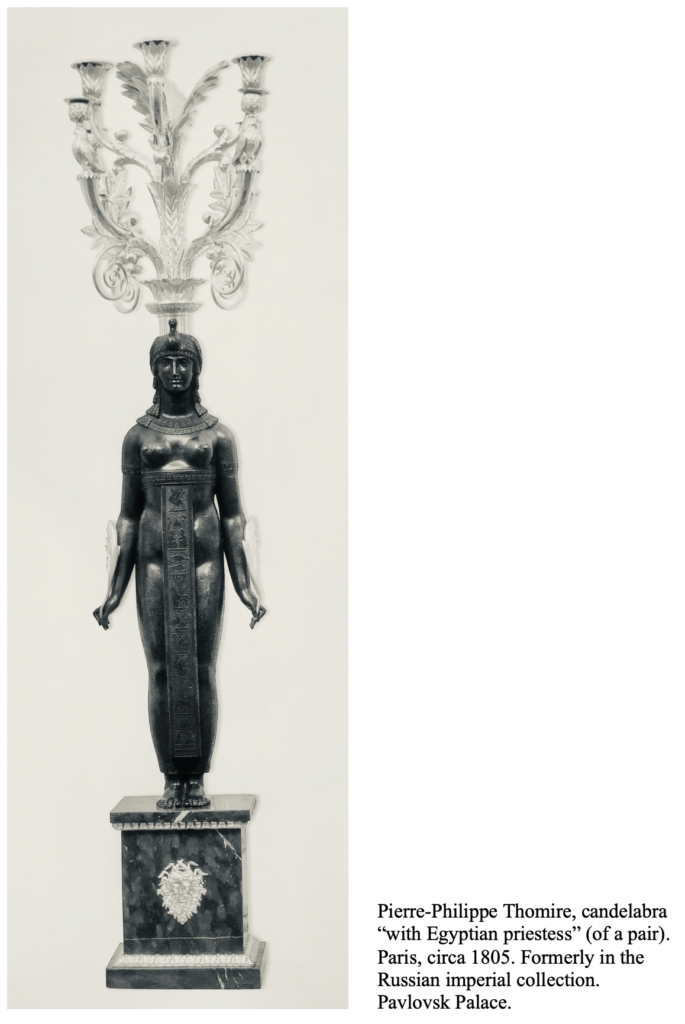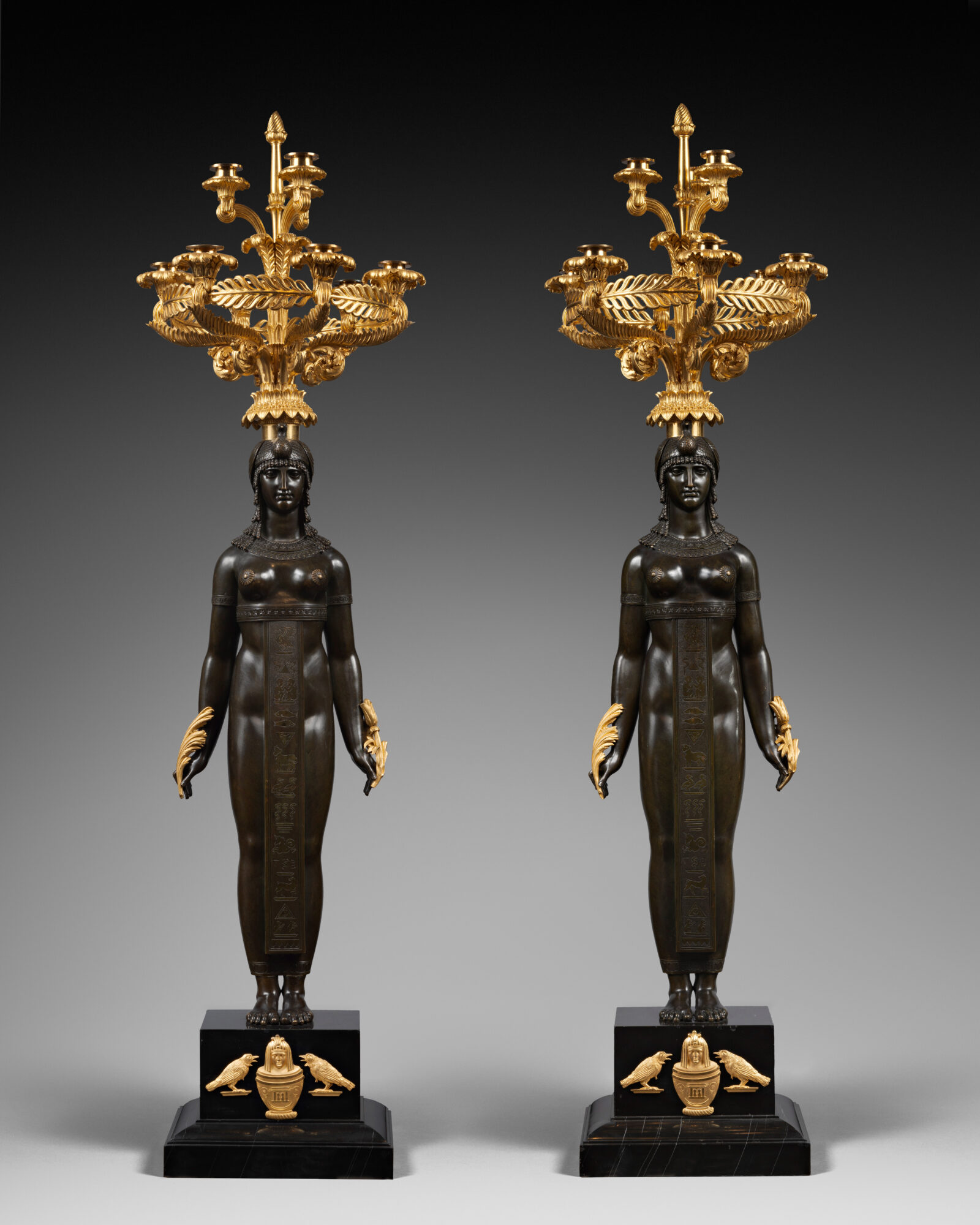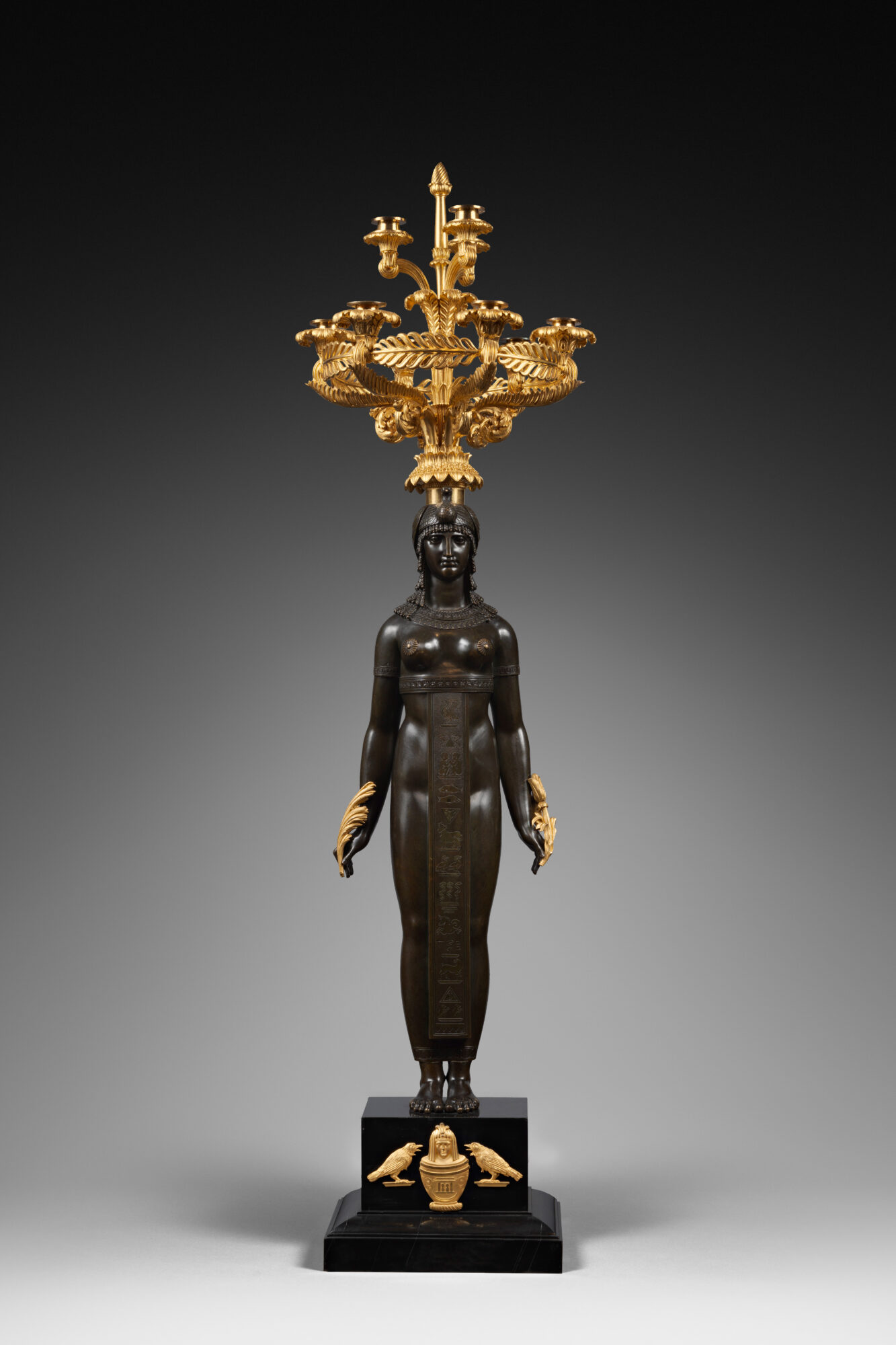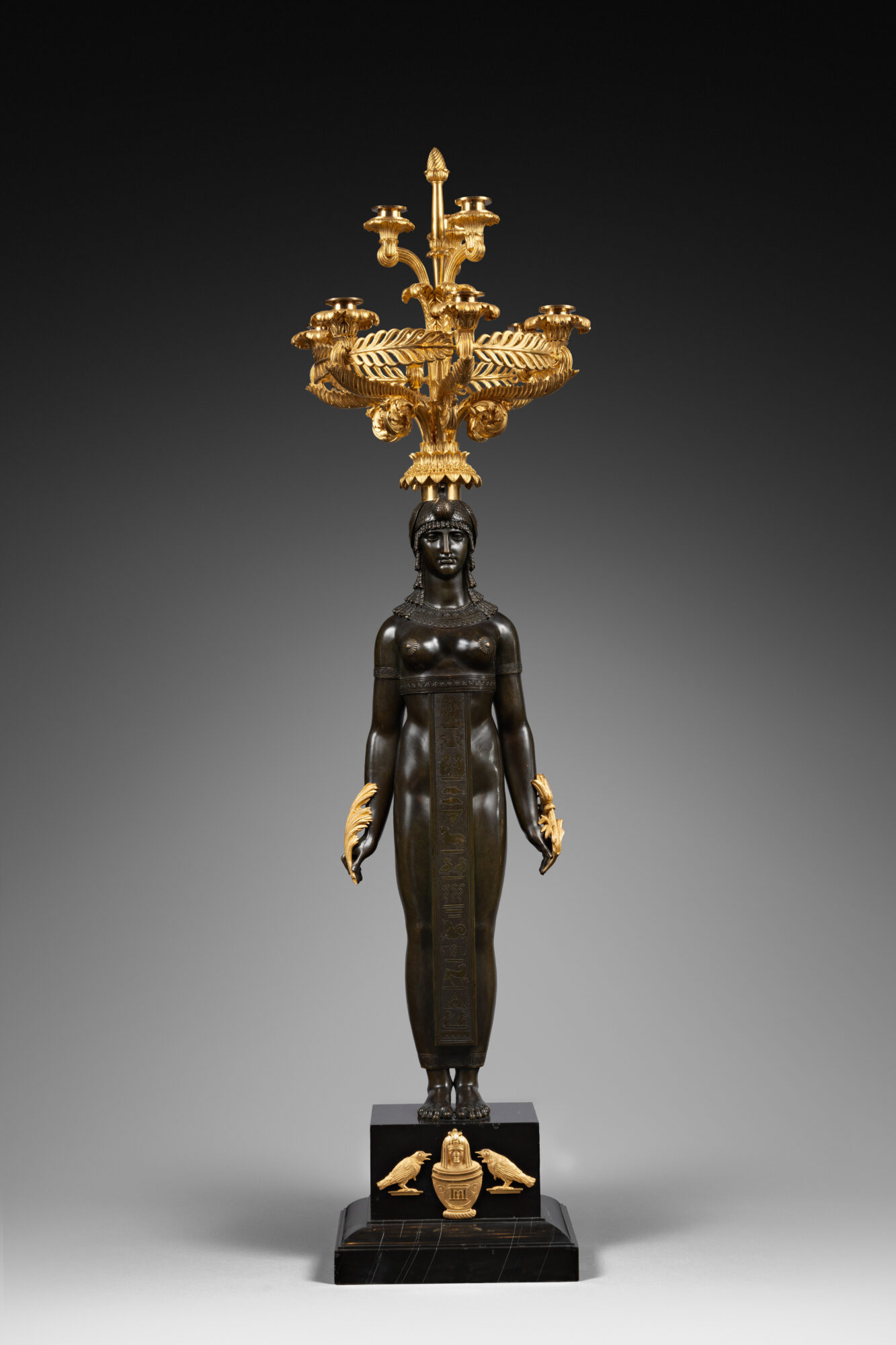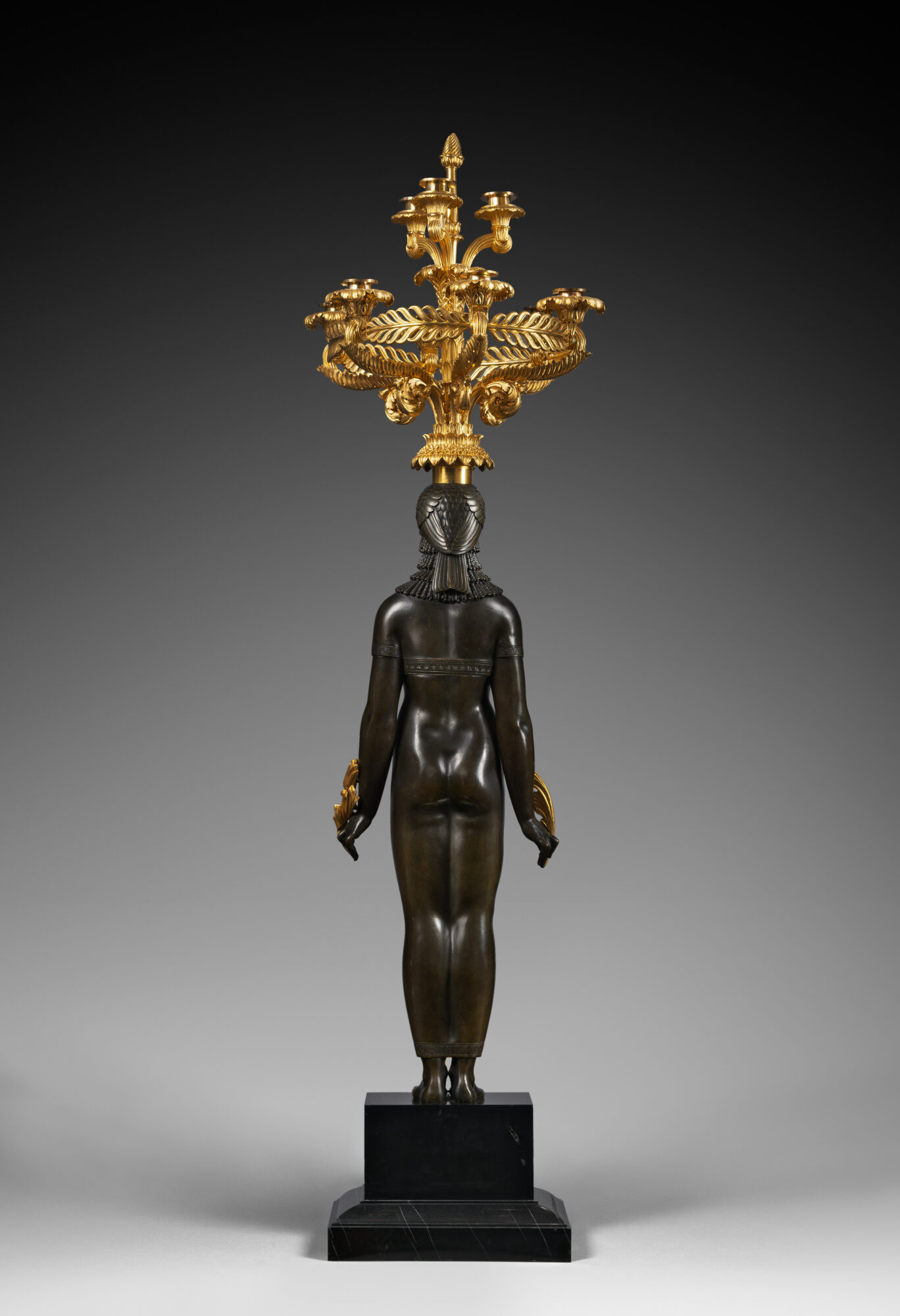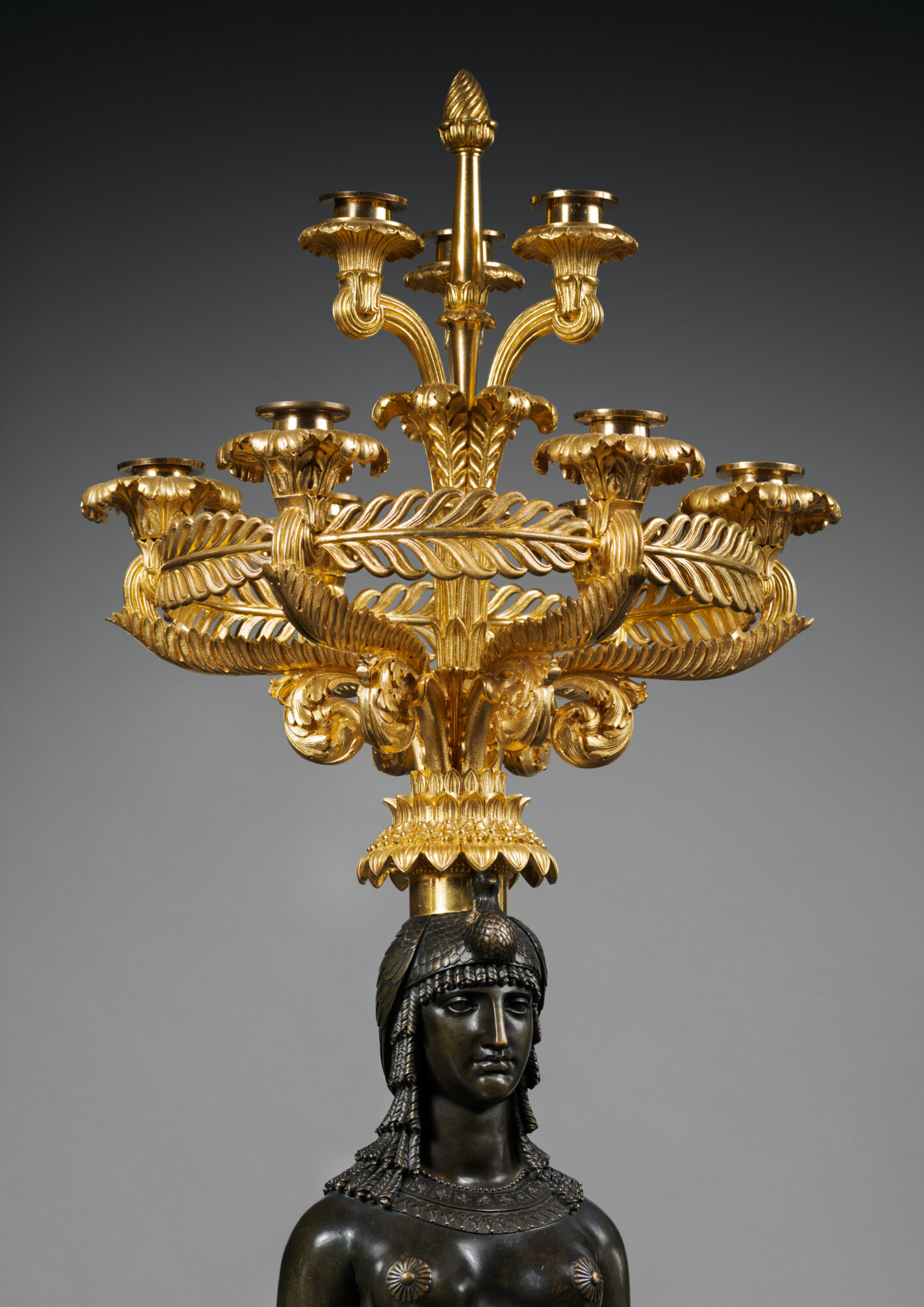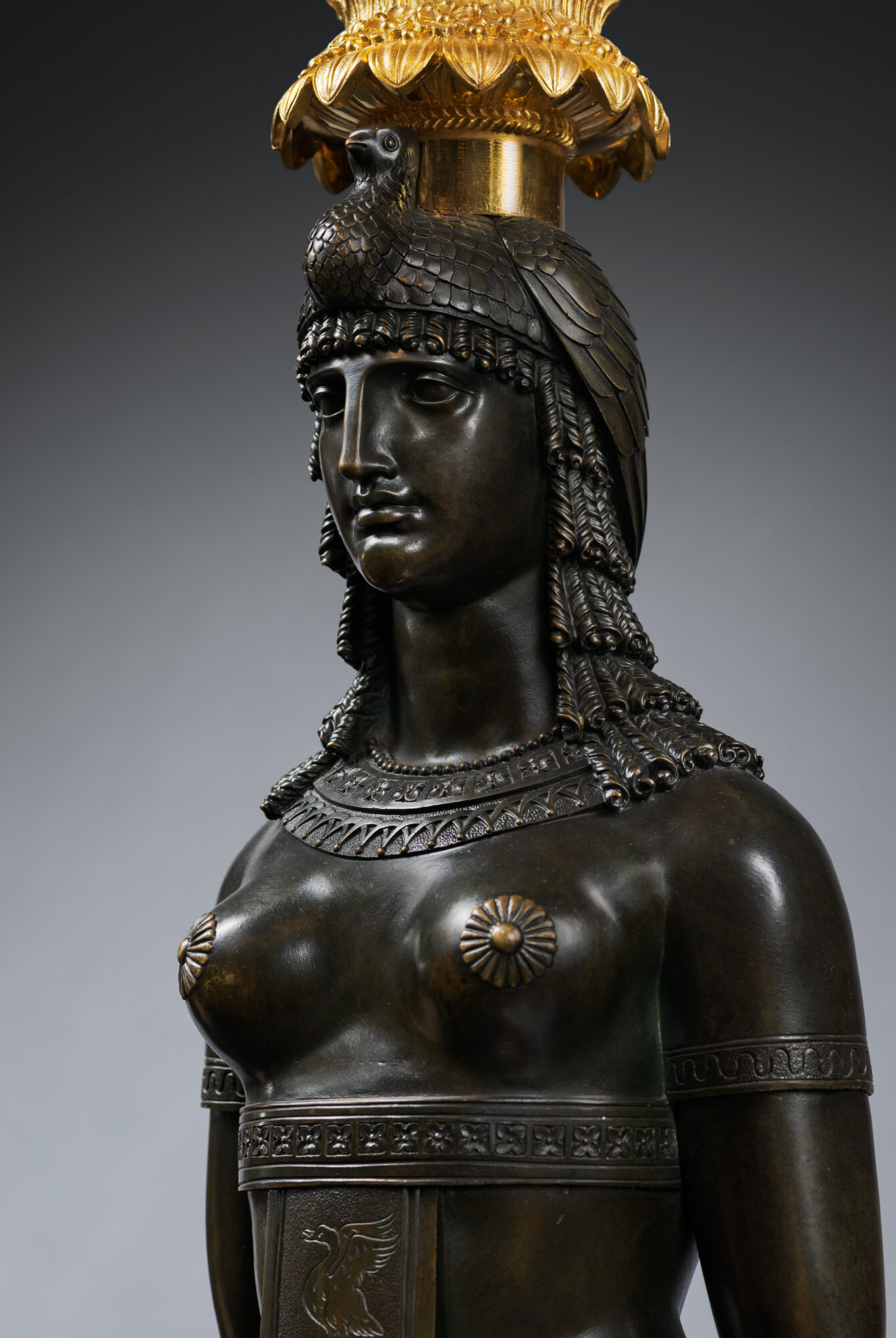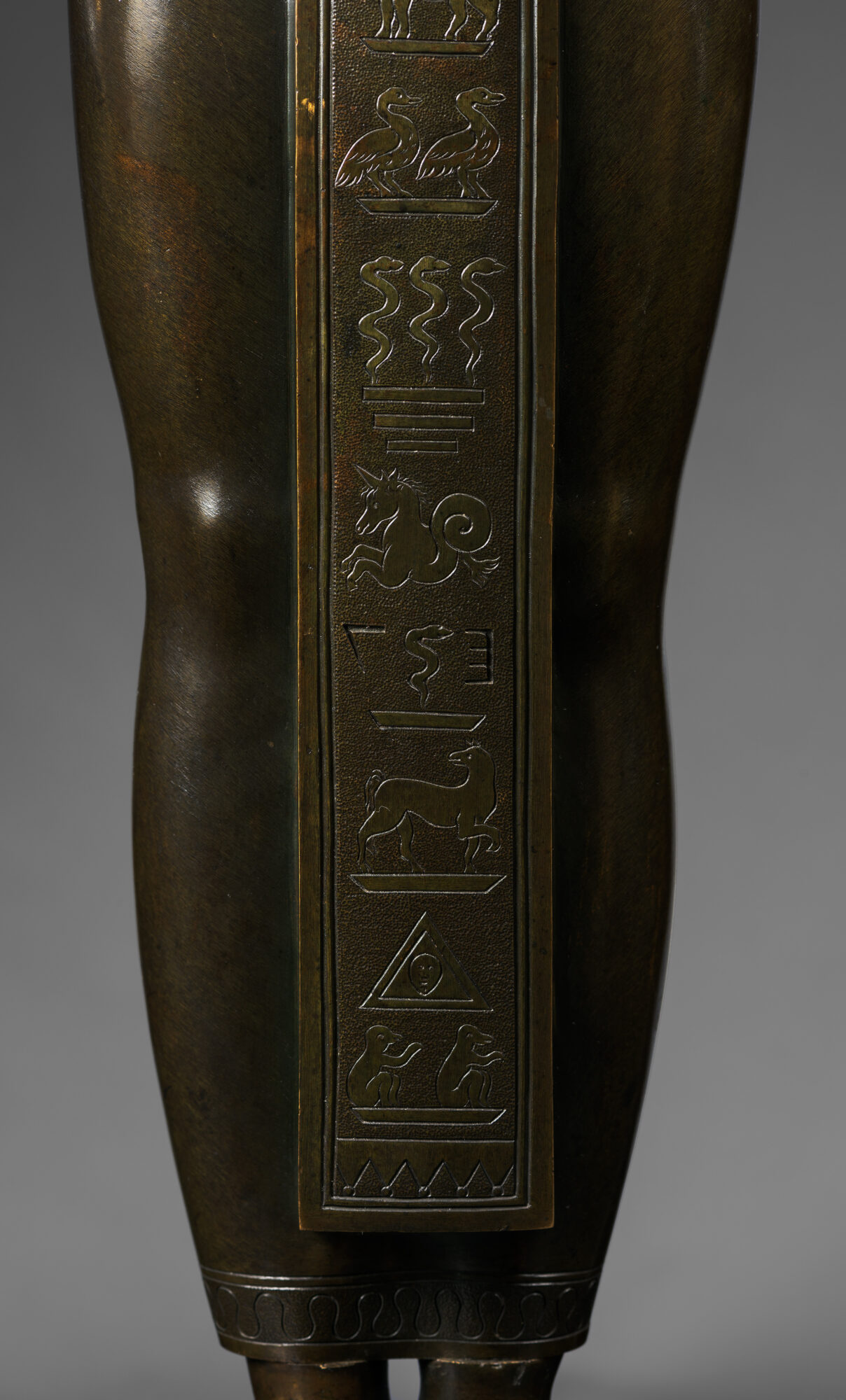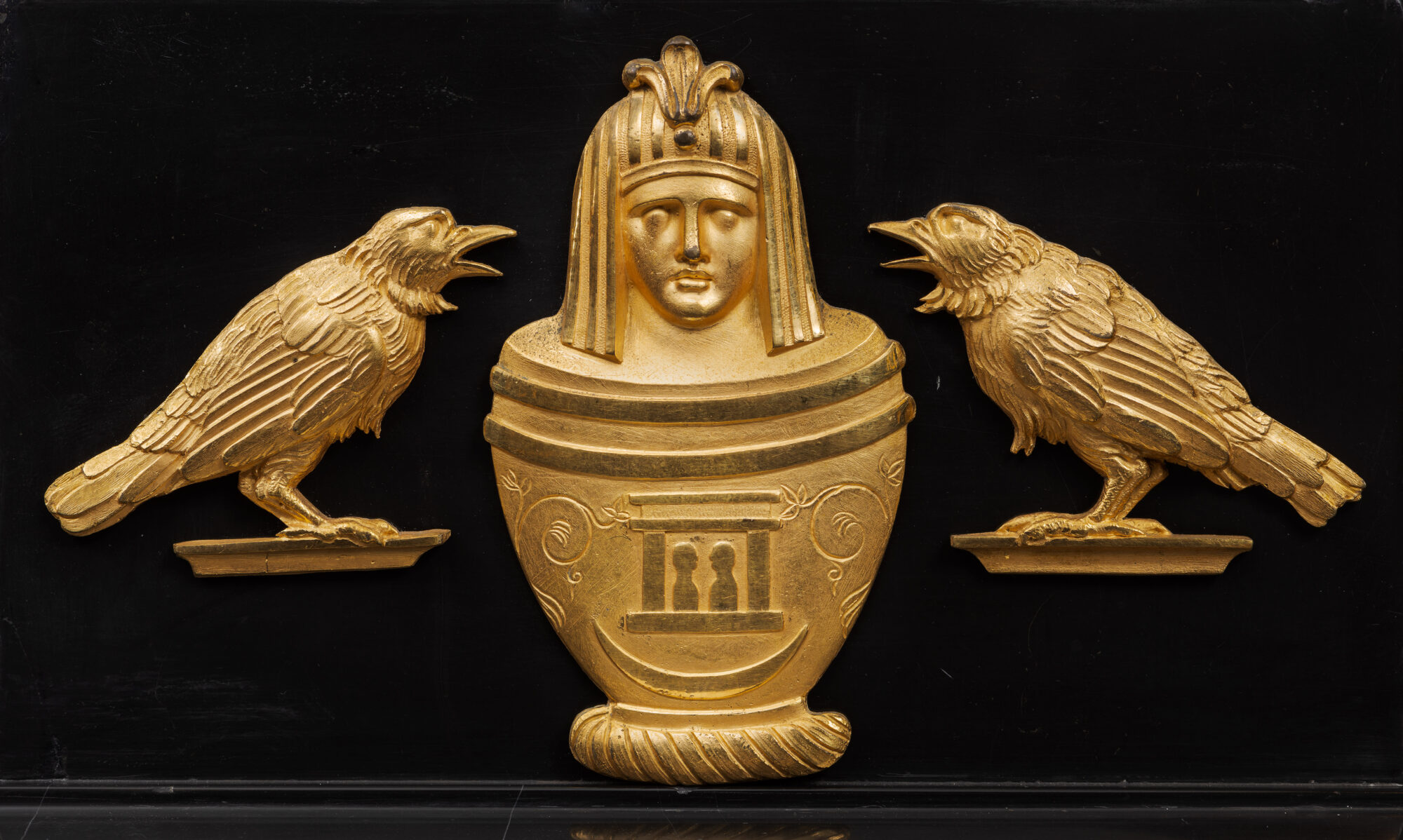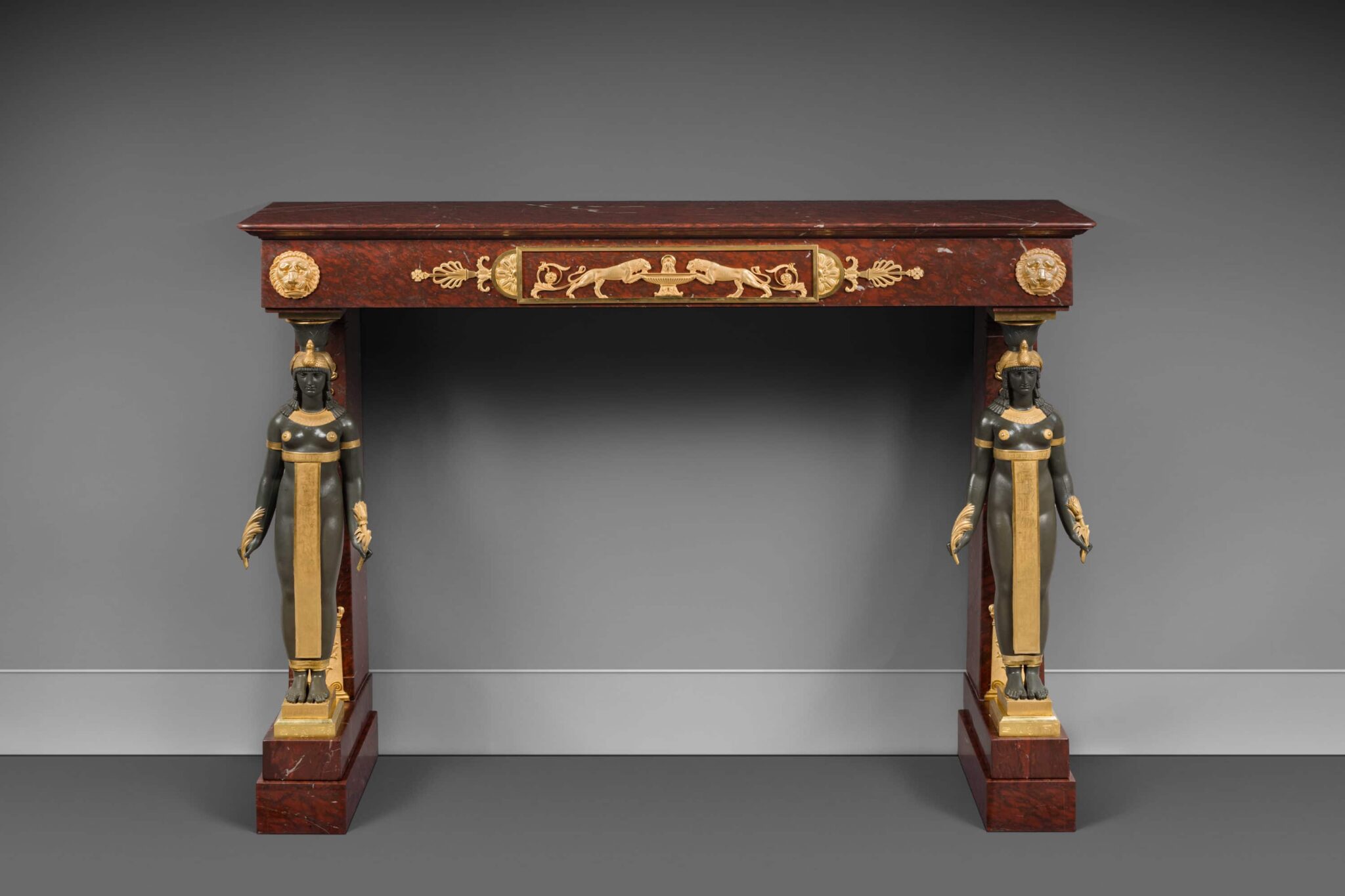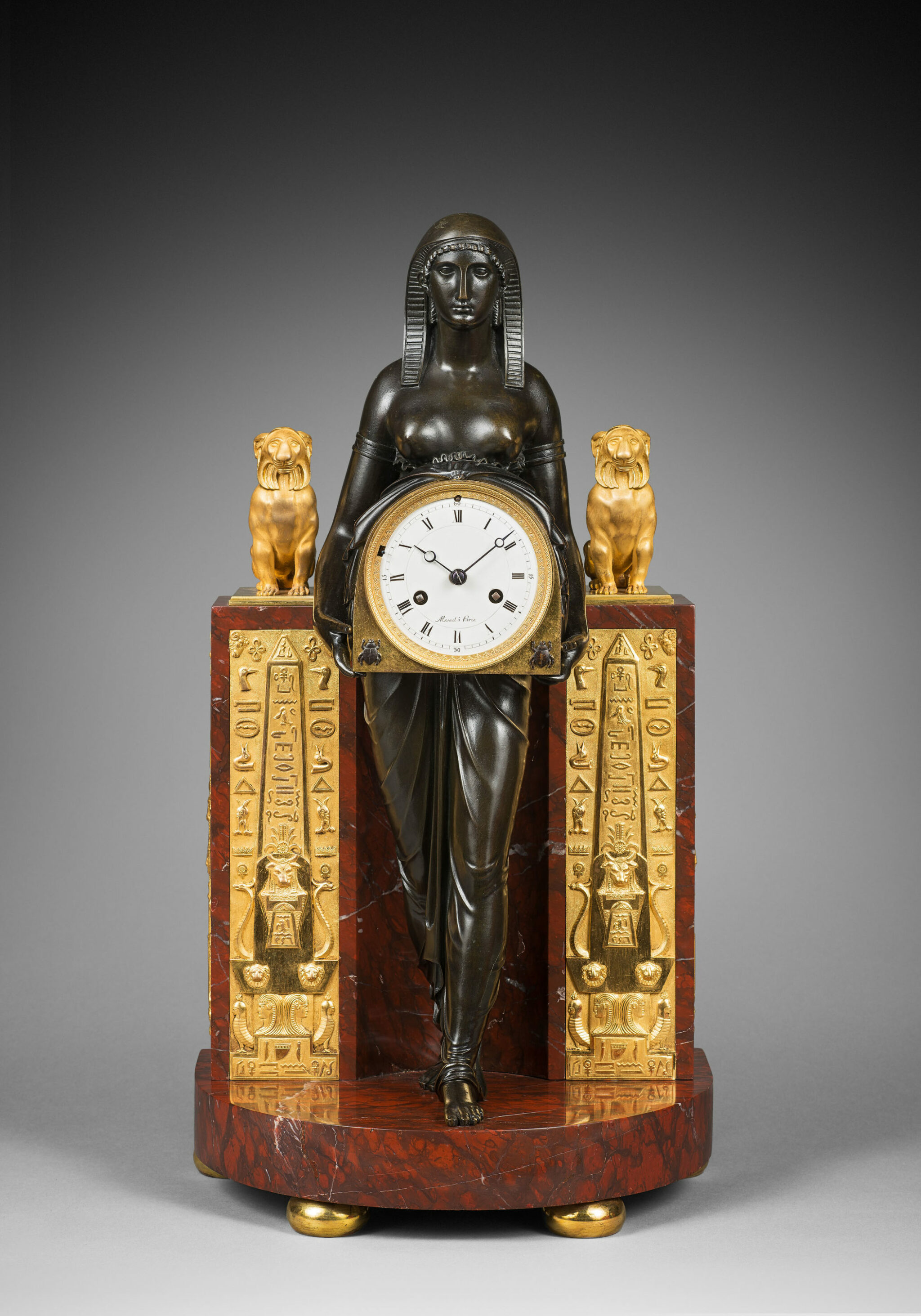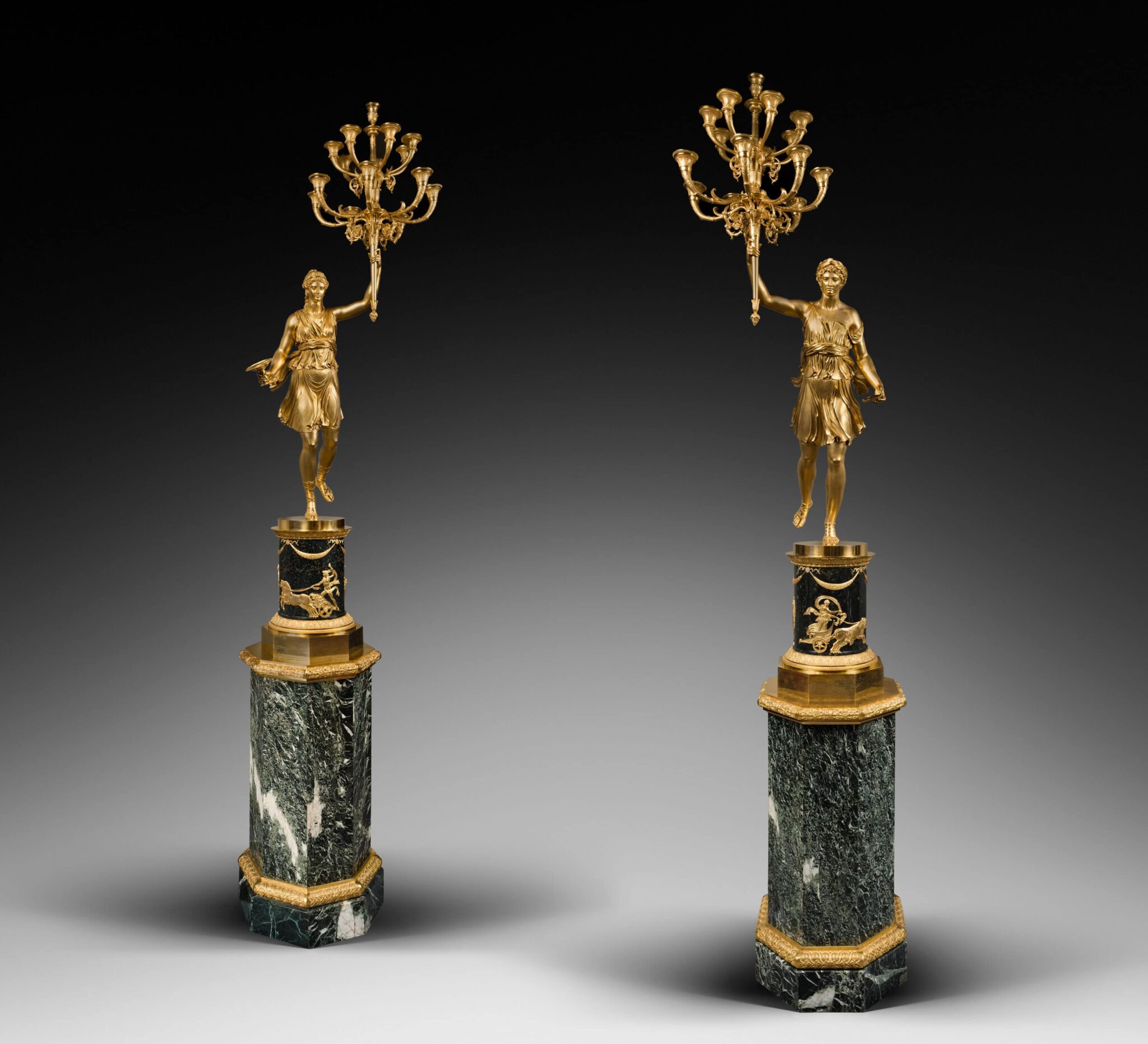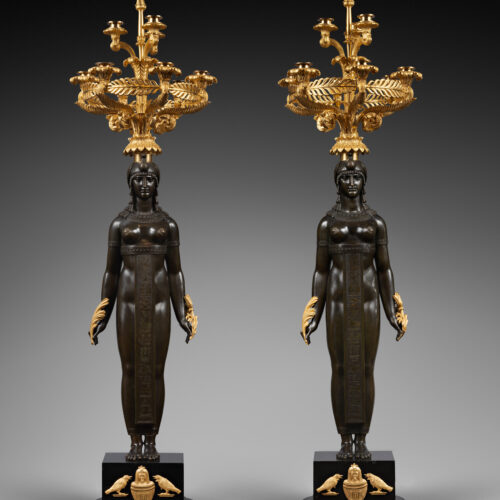Important Pair of Matte Gilt and Patinated Bronze and Black Paragon Marble Nine-Light Candelabra
“The Egyptian Priestesses”
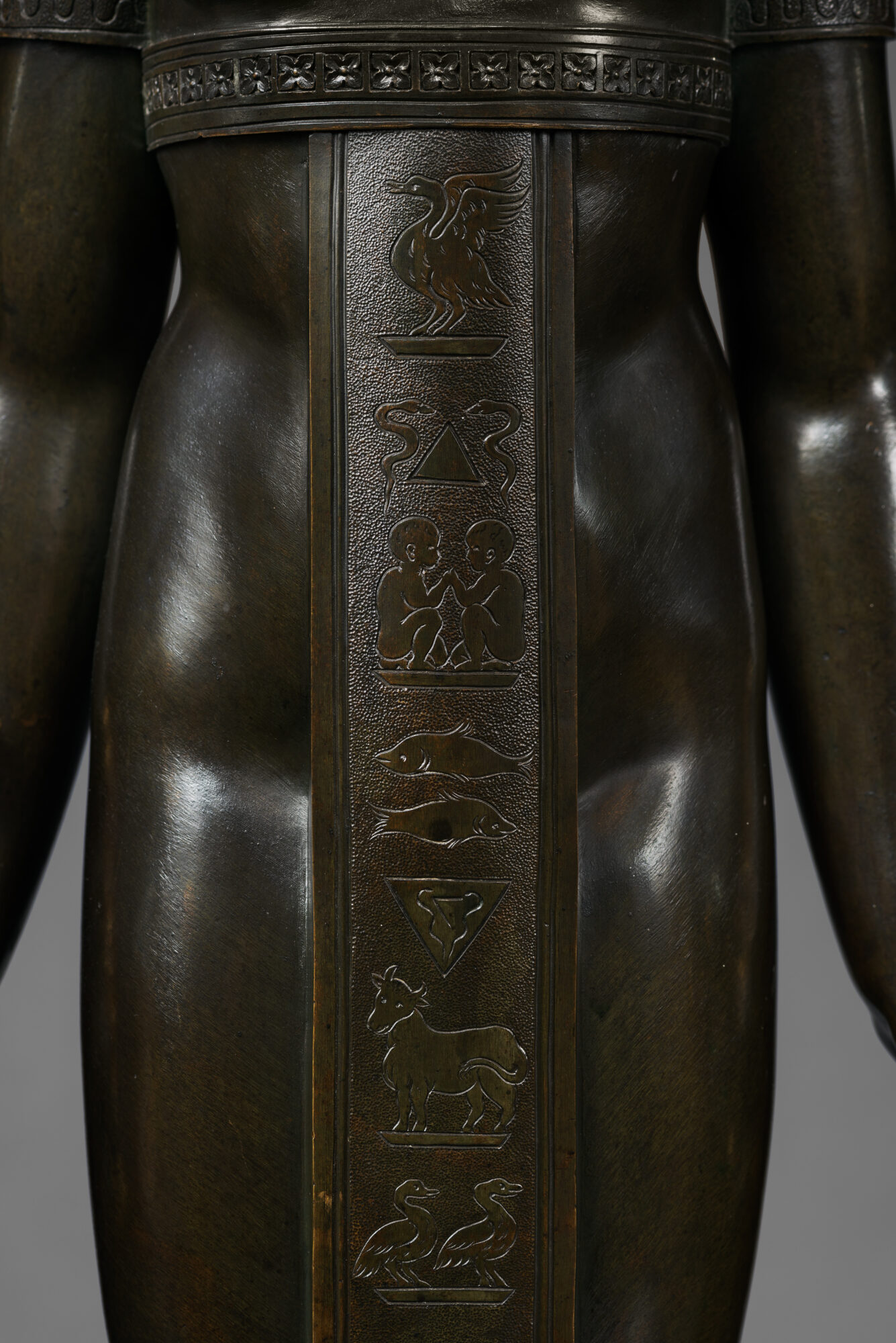
Attributed to Pierre-Philippe Thomire
The Figures after a Drawing by Architects Charles Percier (1764-1838) and Pierre-François-Léonard Fontaine (1762-1853)
Paris, Empire period, circa 1805-1810
Made of finely chased, patinated and matte-gilt bronze, this magnificent pair of candelabra feature beautiful and solemn standing female figures that represent Egyptian priestesses. Clad in loincloths in the form of long bands that are attached under the breasts and are engraved with pseudo-hieroglyphs, they wear necklaces of entwining beads, rosettes and C-scrolls. Their hair is braided and held in place by neret crowns featuring vultures with raised heads, whose wings surround the tops of the women’s heads. The priestesses hold palm branches in their hands – symbols of eternity and rebirth – and support on their heads a bouquet of nine light branches that emerge from wreaths of leaves and flowers, made up of six curved arms that are linked by wide palms and are centered by a stylized lotus that terminates in a spiral-decorated apple that issues three additional reed-form light branches. The figures stand on rectangular bases that are adorned with applied motifs of lidded canopic jars whose lids are decorated with Egyptian busts flanked by facing ravens. The bases stand on molded quadrangular plinths.
In 1798 and 1801 France led expeditions to Egypt, in order to gain control of the country and dominate the region politically and economically, which would thwart British ambitions in the Orient. Led initially by General Bonaparte, and then by his successors, this military operation, generally known as the Campaign in Egypt, also included a research mission that was carried out by eminent scientists and historians, and first-rate artists. After its return to France, the repercussions of this mission were enormous, particularly in the field of the decorative arts. In 1802, Baron Vivant-Denon published his Voyage dans la Basse et la Haute Egypte, which became an immense success. Subsequently, architects, painters and artisans hastened to lend their own personal interpretation to Egyptian motifs, varying them and incorporating them into their own creations. In the field of lighting instruments, many candelabra featured solemn female figures that were inspired by the monumental sculptures of ancient Egypt.
This is the specific context within which the present candelabra were produced. Various figures that served as supports for various items were inspired by a preparatory drawing made around 1800 by Emperor Napoléon’s renowned architects Charles Percier and Pierre-François-Léonard Fontaine (see H. Ottomeyer and P. Pröschel, Vergoldete Bronzen, Die Bronzearbeiten des Spätbarock und Klassizismus, Band I, Munich, 1986, p. 336, fig. 5.3.4). This watercolor sketch, now in the Louvre Museum in Paris, served as inspiration for a small number of contemporary Parisian creations. Among the pieces that feature the same Egyptian figures, a console table, which in 1807 stood in the Gold Salon of the Parisian mansion of Arch-Treasurer Lebrun, is now in the Grand Trianon in the gardens of the Château de Versailles (see reproduction in P. Arizzoli-Clémentel and J-P. Samoyault, Le mobilier de Versailles, Chefs-d’œuvre du XIXe siècle, Editions Faton, Dijon, 2009, p. 95-97).
As concerns the present candelabra model, it may be confidently attributed to Pierre-Philippe Thomire, who produced several variations of it in the early years of the 19th century. A small number of similar candelabra featuring the same Egyptian female figures are known today – and all of them have been attributed to Thomire. One pair, which counts among the masterpieces in the Pavlovsk Palace, today stands in the New Study on the museum’s ground floor. These candelabra were probably furnished to Tsar Paul I for Saint-Petersburg’s Michaelovsky Castle by marchand-mercier Jérome Culot, who is known to have ordered many bronze pieces from Pierre-Philippe Thomire (illustrated in Le Palais de Pavlovsk, Catalogue complet des collections, Volume X, Métal-Bronze, Édition 2, Candélabres, girandoles, miracles, chandeliers, seconde moitié du XVIIIe – fin du XIXe siècle, Saint Petersburg, GMZ “Pavlovsk”, 2016, p. 96-99, catalogue 82-83). A second pair, which Thomire delivered to the Mobilier Impérial, and was later transferred to the Saint-Cloud Palace, is today in the collection of the Grande Chancellerie of the Légion d’Honneur, in the Hôtel de Salm, Paris (J. M. Humbert, et al., Egyptomanie, 1994, p. 286, n° 167). One further pair, formerly in the collection of Monsieur Hubert de Givenchy, was sold in Monaco in 1993.
Pierre-Philippe Thomire (1751 - 1843)
Pierre-Philippe Thomire was the most important Parisian bronzier of the last quarter of the 18th century and the first decades of the following century. Early on in his career he worked for Pierre Gouthière, ciseleur-fondeur du roi, and toward the mid-1770’s began working with Louis Prieur. He later became one of the bronziers attached to the Manufacture Royale de Sèvres, creating the bronze mounts for most of the important creations of the day. After the Revolution, he purchased the stock of Martin-Eloi Lignereux, thus becoming the most important suppliers of furniture bronzes for châteaux and Imperial Palaces. In addition, he worked for a wealthy private clientele, both French and foreign, including several of Napoleon’s Marshals. Thomire retired in 1823.
